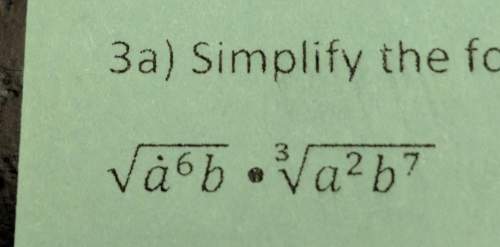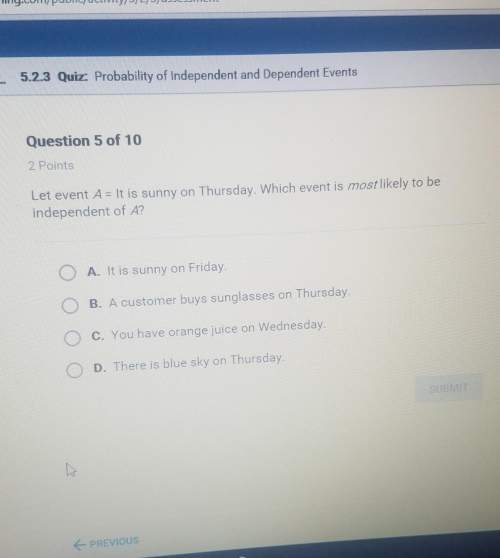
Mathematics, 06.05.2020 04:35, 22mhenton
Conrad and Jill have a taxable income of $63,670. They discovered that they are able to receive a $1,500 tax credit for purchasing an energy-efficient furnace. How will this tax credit affect their taxes?
The tax credit will increase their taxable income by $1,500.
The tax credit is added to the tax owed, not the taxable income.
The tax credit will reduce their taxable income by $1,500.
The tax credit is subtracted from the tax owed, not taxable income.

Answers: 3
Other questions on the subject: Mathematics

Mathematics, 21.06.2019 16:00, stormhorn491
Question part points submissions used suppose that 100 lottery tickets are given out in sequence to the first 100 guests to arrive at a party. of these 100 tickets, only 12 are winning tickets. the generalized pigeonhole principle guarantees that there must be a streak of at least l losing tickets in a row. find l.
Answers: 2

Mathematics, 21.06.2019 17:00, SillyEve
In tossing one coin 10 times, what are your chances for tossing a head? a tail? 2. in tossing one coin 100 times, what are your chances for tossing a head? a tail? 3. in tossing one coin 200 times, what are your chances for tossing a head? a tail? deviation = ((absolute value of the difference between expected heads and observed heads) + (absolute value of the difference between expected tails and observed tails)) divided by total number of tosses. this value should always be positive. 4. what is the deviation for 10 tosses? 5. what is the deviation for the 100 tosses? 6. what is the deviation for 200 tosses? 7. how does increasing the total number of coin tosses from 10 to 100 affect the deviation? 8. how does increasing the total number of tosses from 100 to 200 affect the deviation? 9. what two important probability principles were established in this exercise? 10. the percent of occurrence is the obtained results divided by the total tosses and multiplied by 100%. toss the coins 100 times and record your results. calculate the percent occurrence for each combination. percent head-head occurrence: percent tail-tail occurrence: percent head-tail occurrence:
Answers: 3

Mathematics, 21.06.2019 21:30, Kittylover65
The price of a visit to the dentist is calculated according to the formula 50+100n50+100n where nn is the number of cavities the dentist finds. on your last visit to the dentist, 22 cavities were found. what was the cost of your visit?
Answers: 2

Mathematics, 22.06.2019 01:30, malikbryant2002
At store a, erasers are sold individually. the cost y of x erasers is represented by the equation y=0.75x. the costs of erasers at store b are shown in the graph.
Answers: 2
Do you know the correct answer?
Conrad and Jill have a taxable income of $63,670. They discovered that they are able to receive a $1...
Questions in other subjects:

Mathematics, 06.11.2020 20:30



Chemistry, 06.11.2020 20:30

Health, 06.11.2020 20:30












